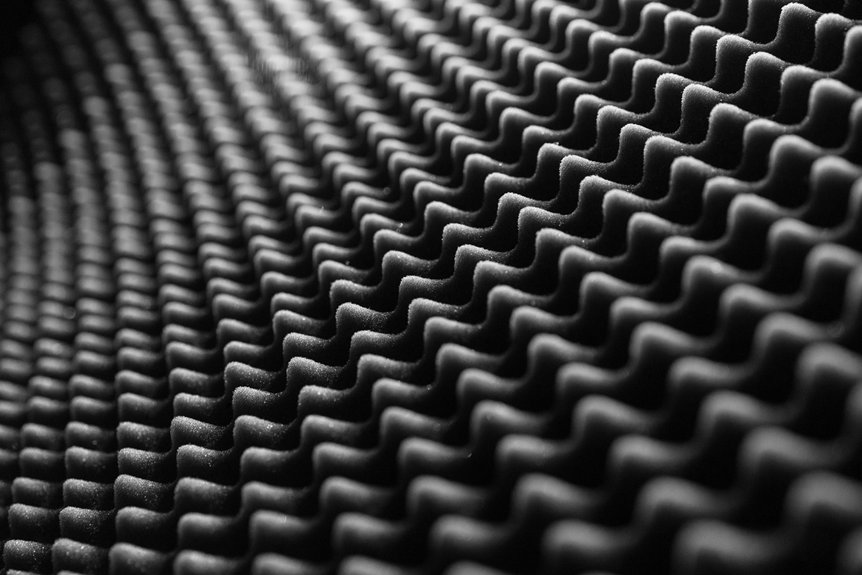Closed cell foam insulation is a dense, rigid material made from polyurethane that offers exceptional insulation, air sealing, and moisture resistance. It expands upon application, effectively filling gaps and enhancing structural integrity. With its high thermal resistance, this insulation helps maintain a comfortable temperature in homes throughout the year, ultimately reducing energy costs.
This type of foam is commonly utilised in walls and roofs, providing both durability and efficiency. Its robust characteristics make it an ideal choice for various building applications, ensuring long-lasting performance.
To learn more about the advantages of closed cell foam insulation and its installation process, continue exploring its key features and practical uses.
Composition and How It Works
Closed-cell foam insulation is composed of two primary chemical components that react with one another to create the foam. These components are isocyanate and polyol resin, which together form polyurethane. The isocyanate, typically methylene diphenyl diisocyanate, interacts with the polyol, which includes catalysts, blowing agents, and flame retardants. When these ingredients combine, a rapid chemical reaction takes place, resulting in the foam expanding and solidifying within moments. Non-HCFC gases serve as blowing agents, enabling the foam to grow significantly larger than its original volume. This process yields a robust, solid material that offers exceptional insulation properties, moisture resistance, and structural integrity. The mixture is applied on-site using a spray gun, which guarantees accurate application and seamless coverage. This method is particularly beneficial for ensuring effective insulation in various building projects across the UK. The process creates a dense, compact foam that improves both thermal performance and durability in finished installations.
Advantages for Energy Efficiency and Durability
Due to its dense structure, closed-cell foam insulation offers outstanding energy efficiency and durability. With a high R-value, it provides superior resistance to heat transfer compared to other materials such as fibreglass or open-cell foam. This results in homes remaining warmer during winter and cooler in summer, leading to significant reductions in energy bills. Up to 40% of a building’s energy can be lost due to air infiltration, and closed-cell foam helps minimize this loss by sealing the building envelope effectively. Furthermore, closed-cell foam acts as an effective air barrier, sealing cracks and gaps to prevent air leaks, which can contribute to considerable energy loss. It also functions as a moisture barrier, helping to protect against mould and water damage. Additionally, it enhances the strength of walls and roofs, making structures more resilient to external pressures. These attributes ensure long-lasting performance, lower maintenance requirements, and support for sustainable building practices, making closed-cell foam insulation an excellent choice for energy-efficient construction in the UK.
Applications and Installation Considerations
Closed-cell foam insulation is widely utilised across various types of buildings and environments in the UK, thanks to its durability and moisture resistance.
It’s commonly applied in residential, commercial, and industrial settings for walls, roofs, and attics, providing airtight seals that enhance energy efficiency.
This type of insulation also improves the strength of roofing systems, prevents air leaks, and maintains stable temperatures in cold storage facilities such as freezers and refrigerated lorries.
When considering installation, keep in mind the following points:
Preparation
Ensure surfaces are clean and dry to facilitate proper bonding.
Equipment
Utilise specialised spray foam tools for an even application.
Sealing
Seal any gaps and seams to maximise the insulation’s effectiveness.
Safety
Always wear protective gear and ensure good ventilation during installation.
Conclusion
Closed cell foam insulation provides effective thermal protection, significantly enhancing energy efficiency and the durability of buildings. Its dense structure ensures excellent moisture resistance and long-term stability, making it a suitable choice for a variety of applications.
Proper installation is essential to maximise the benefits of this insulation type and to prevent potential issues. Overall, closed cell foam insulation is a dependable option for those seeking improved insulation performance, cost savings, and increased longevity of their buildings.
The advantages of closed cell foam insulation make it a popular choice in both residential and commercial construction across the UK.

